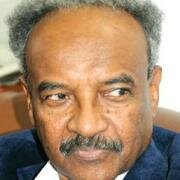In this article I intend to run a very interesting comparison between Sudan and Ethiopia in the major aspects
. It will reveal two important elements – One, that there is similarity in the geography, social, governance, ethnicity and religion aspects. Two, that there is a big difference in the economic aspects. Information and statistics are taken from the annual CIA World Fact Book.
1. Ethiopia is the second most populous country in Africa with 105 million. Sudan population end of 2017 is 37 million. Ethiopia ethnic groups 34.4%, Oromo, Amhara 27%, Somali 6.2%, Tigray 6.1%, Sidama 4%, Gurage 2.5%, Welaita 2.3%, Hadiya 1.7%, Afar 1.7%, Gamo 1.5%, Gedeo 1.3%, Silte 1.3%, Kefficho 1.2%, other 8.8%. Sudan population on July 2017 was 37.5 million. Ethinic Groups: Sudanese Arab 70%, Fur, Beja, Nuba and Fallata 30%.
2. Geography:
Ethiopia area 1.1 million square meters. Land boundries 5925 km with six countries: Djibouti 342 km, Eritrea 1033 km, Kenya 867 km, Somalia 1640 km, S. Sudan 1299 km, and Sudan 744 km. No coast line.
Sudan area 1.9 million square meters. Land boundaries with seven countries 6819 km: Central African Republic 174 km, Chad 1403 km, Egypt 1276 km, Eritrea 682 km, Ethiopia 744 km, Libya 382 km and S. Sudan 2158 km. Coast line 853 km.
3. Governance: Ethiopia one party- state with planned economy federal parliamentary republic with 9 ethnically based states.
Sudan one party-state with free market economy, federal presidential republic with 18 geographically based states.
4. Economy:
Ethiopia: Planned mixed economy. For more than a decade before 2016 Ethiopia grew at a rate 8% to 11% annually and is considered one of the fastest growing state among the 188 IMF member countries. Growth rate was driven by the government investment in infrastructure, as well as sustained progress in agriculture and services sectors. More than 70% of population employed in agriculture, but services have surpassed agriculture as the principal source of GDP. The state is heavily engaged in economy. Ongoing infrastructure projects include power production and distribution, roads, rails, airports, airlines and industrial parks. Key sectors are stated-owned including telecommunication, banking and insurance. Ethiopia foreign exchange earnings are led by the services sector – primarily the state-run Ethiopian airlines followed by exports of several commodities (Ethiopian airlines almost covers Chapter One of the budget – salaries). Banking, insurance, telecommunications and micro-credit industries are restricted to domestic investors. Ethiopia attracted US$8.5 billion direct investment mostly from China, Turkey, India and EU. Investment has been primarily in infrastructure, construction, agriculture, horticulture, agricultural processing, textile, leather and leather products. In the fall of 2015 the government finalized and published the current 2016 – 2020 five-year plan known as the Growth and Transformation Plan II which emphasizes developing manufacturing in sectors where Ethiopia has a comparative advantage such as textile and garments, leather goods and processed agriculture products. To support industrialization Ethiopia plans to increase installed power generation by 8320 MW up from 2000 MW.
Ethiopia GDP (2017) US$195.8 billion
Sudan GDP (2017) US$186.6 billion
Real growth rate:
Ethiopia 8.5% (2017; 8% (2016); 10.4% (2015)
Sudan: 3.7% (2017); 3.1% (2016); 4.9% (2015)
Industrial production growth rate: Ethiopia 10.5% (Number 9 worldwide); Sudan: 2.5% (2017)
Unemployment rate: Ethiopia 17.5%; Sudan 20% (2017)
People below poverty line: Ethiopia 30%; Sudan 47%
Inflation Rate: Ethiopia 8.1% (2017); Sudan 55% (March 2018 and 30% (2017)
Budget: Ethiopia: Revenues US$12.11 billion, expenditure US$14.6 billion (2017), deficit -3.2% of GDP
Exports US$3.1 billion, imports US$16.8 billion (2017)
Reserve of foreign exchange and gold US$3.1 billion (2017)
Foreign debts (2017) US$29 billion.
Budget- Sudan
Revenues US$8.2 billion, expenditure US$13.4 billion; deficit -4.4% of GDP (2017)
Exports US$3.8 billion, imports US$8.65 billion (2017)
Reserve of foreign exchange and gold US$505 million (2017)
Foreign debt (2017) US$53.4 billion
So, the main difference between Sudan and Ethiopia are in the economy aspects which are:
1. Ethiopia opted for the economic policies and went all the way in the planned mixed economy. Its government entirely monopolized the key sectors of telecommunications; banking, insurance and credit economy which was left wide open to foreign investors in all sectors including the key sectors mentioned above.
2. Ethiopia invested heavily in infrastructure projects – power generation, railways, airlines, airports, and industrial parks as well as sustained progress in agriculture. Sudan neglected all infrastructure projects and agricultural development.
3. Ethiopia emphasized developing manufacturing in sectors where it has a comparative advantage such as: textile, garments, leather goods and process agricultural products.
Sudan neglected its advantage on major agricultural and industrial projects in cotton, textile, leather, Gum Arabic (80% of Gum Arabic of the World in Sudan).
So all of those three factors gave Ethiopia the leverage to grow very fast. Their absence in Sudan impeded the growth and development.
-
Moonlight: China – Africa Prospective Forum is Strategic PartnershipNext >




